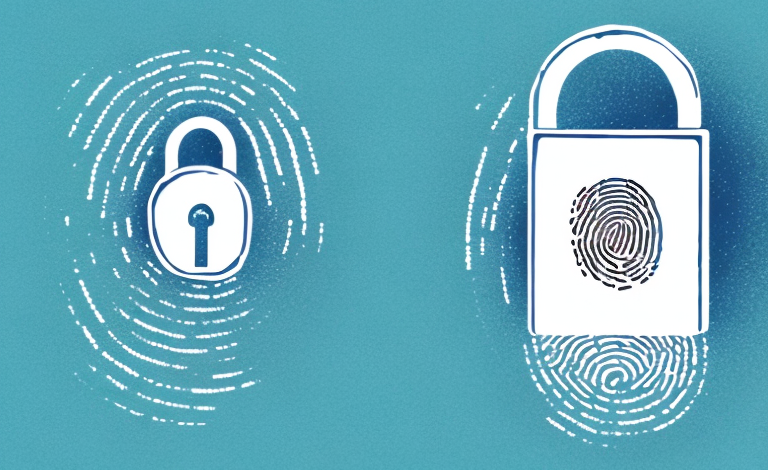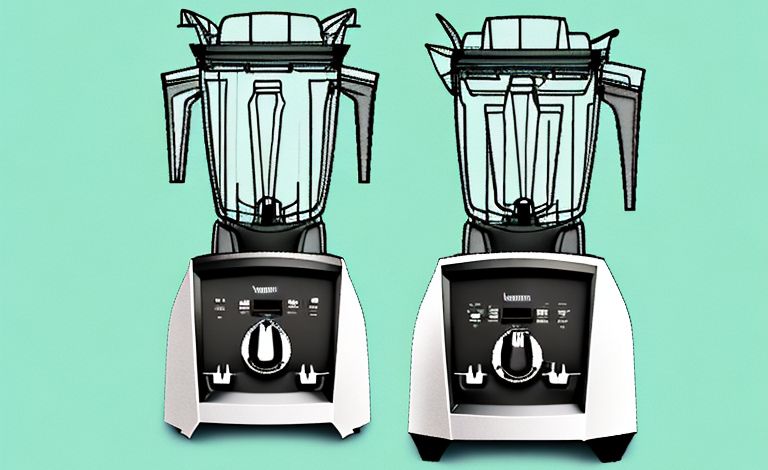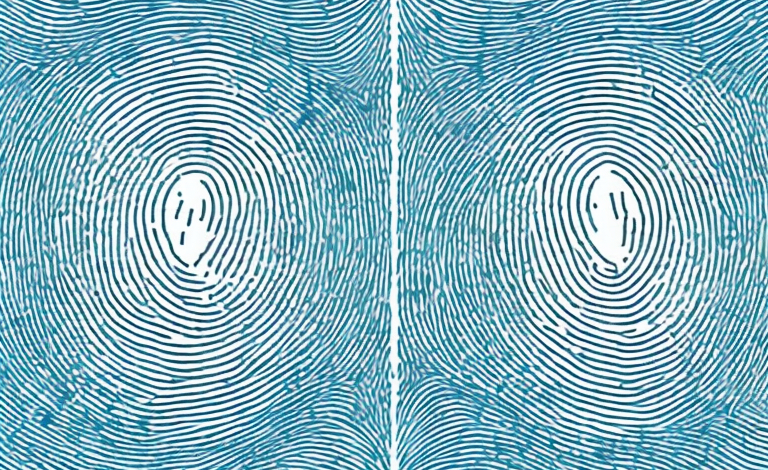Fingerprint locks have become increasingly popular as a means of securing access to everything from smartphones to high-security buildings. But just how accurate are these systems? In this article, we will explore the technology behind fingerprint locks, their advantages and limitations, and techniques for improving their accuracy.
Understanding the technology behind fingerprint locks
Fingerprint locks employ a process known as biometric authentication, which relies on unique physical and behavioral characteristics for identification. When an individual presents their finger to a scanner, the system captures an image of their fingerprint and compares it to a stored database of prints. The database contains a mathematical representation of the unique ridge and valley patterns present in each person’s fingerprint, called minutiae points.
To confirm a match, the system must detect a certain degree of similarity between the presented fingerprint and the stored database. This similarity is determined by comparing the number and location of minutiae points present in both images. The more points of similarity, the higher the probability that the presented fingerprint belongs to the rightful owner of the device or location.
One of the advantages of fingerprint locks is that they are difficult to replicate or forge. Unlike traditional locks that can be picked or bypassed with a copied key, fingerprint locks require the physical presence of the authorized user. Additionally, fingerprint locks can be programmed to recognize multiple users, making them ideal for shared spaces or devices.
However, there are also some limitations to fingerprint lock technology. For example, if a user’s fingerprint is damaged or altered due to injury or illness, the system may not be able to recognize it. Additionally, some fingerprint scanners may be susceptible to false positives or false negatives, which can result in unauthorized access or denial of access to the rightful user.
The history of fingerprint recognition technology
The use of fingerprints for identification dates back to ancient Babylon and China, where fingerprints were pressed in clay tablets for record-keeping purposes. In the late 19th century, Sir Francis Galton developed a method of using fingerprints for identification in criminal investigations. Since then, fingerprint recognition has become a widely used form of biometric authentication, with applications in law enforcement, access control, and personal electronics.
In recent years, advancements in technology have led to the development of more sophisticated fingerprint recognition systems. These systems use algorithms to analyze the unique patterns and ridges in a person’s fingerprint, making it more accurate and reliable than ever before. Additionally, fingerprint recognition technology has expanded beyond just identification and authentication, with new applications in healthcare, banking, and transportation. As technology continues to evolve, it is likely that fingerprint recognition will become even more prevalent in our daily lives.
The advantages of using a fingerprint lock over traditional lock systems
One of the key advantages of using a fingerprint lock is that it eliminates the need for traditional keys, which can be lost or stolen. Additionally, fingerprint locks provide a high degree of security by using unique physical characteristics to verify identity, making it difficult for unauthorized users to gain access.
Another advantage of using a fingerprint lock is that it allows for easy and convenient access. With a traditional lock system, you may need to fumble with keys or remember a combination, which can be time-consuming and frustrating. However, with a fingerprint lock, all you need to do is place your finger on the scanner and the lock will open. This can be especially useful in situations where you need to quickly enter a room or building, such as in an emergency.
The limitations of fingerprint locks and how to overcome them
One of the primary limitations of fingerprint locks is their reliance on physical contact with the scanner. This can lead to issues with cleanliness and durability, as well as the possibility of the scanner being damaged or worn over time. Additionally, some fingerprint sensors may fail to recognize fingerprints that are worn, injured, or covered in sweat or other substances.
To overcome these limitations, manufacturers have developed a range of techniques, including improved sensor designs, algorithms that can compensate for variations in fingerprint quality, and devices that combine fingerprint recognition with other forms of biometric authentication, such as iris or facial recognition.
Another limitation of fingerprint locks is their vulnerability to hacking. While it is difficult to replicate a person’s unique fingerprint, it is not impossible. Hackers can use various methods to create fake fingerprints, such as using a high-resolution photograph of a fingerprint or creating a mold of a fingerprint using gelatin or silicone. This can compromise the security of the lock and allow unauthorized access.
To address this issue, manufacturers have implemented additional security measures, such as multi-factor authentication, where a user must provide multiple forms of identification, such as a fingerprint and a password, to access the lock. Some locks also use advanced encryption techniques to protect the fingerprint data stored in the device.
A comparison of fingerprint locks with other forms of biometric authentication
Fingerprint locks are just one of many forms of biometric authentication. Other options include facial recognition, iris scanning, voice recognition, and DNA analysis. Each of these techniques has its own unique advantages and limitations, and the choice of which one to use will depend on the specific requirements of the application.
Facial recognition is a popular form of biometric authentication that uses algorithms to analyze and compare facial features. It is often used in security systems and mobile devices for user authentication. However, it can be less reliable in low light conditions or if the user’s face is partially obscured. Iris scanning, on the other hand, uses infrared technology to capture a detailed image of the iris, which is unique to each individual. This method is highly accurate and secure, but can be more expensive to implement. Voice recognition is another option, which analyzes the unique characteristics of a person’s voice to verify their identity. However, it can be less reliable in noisy environments or if the user has a cold or sore throat. Finally, DNA analysis is the most accurate form of biometric authentication, but it is also the most invasive and expensive, and is typically only used in high-security applications such as forensic investigations.
An analysis of the accuracy rates of different types of fingerprint locks
The accuracy of fingerprint locks can vary depending on the specific technology used. Capacitive sensors, which detect changes in capacitance caused by the ridges and valleys in the fingerprint, tend to be more accurate than optical sensors, which rely on reflected light to capture the image of the fingerprint. Additionally, newer algorithms that take into account variations in finger placement and pressure have been shown to improve accuracy rates.
However, it is important to note that the accuracy of fingerprint locks can also be affected by external factors such as dirt, moisture, and cuts or scars on the fingers. Regular cleaning and maintenance of the fingerprint scanner can help to improve accuracy rates and reduce the likelihood of false rejections. It is also recommended to register multiple fingers to increase the chances of successful authentication. Overall, while fingerprint locks can provide a convenient and secure method of access control, it is important to consider the specific technology and factors that may affect accuracy rates.
The impact of environmental factors on the accuracy of fingerprint locks
Environmental factors such as temperature, humidity, and lighting can have an impact on the accuracy of fingerprint locks. Changes in temperature and humidity can cause skin to dry out or become moist, which can affect the quality of the fingerprint image. Poor lighting conditions can also make it difficult for the sensor to capture a clear image of the fingerprint.
In addition to temperature, humidity, and lighting, other environmental factors can also affect the accuracy of fingerprint locks. For example, exposure to chemicals or dirt can make it difficult for the sensor to read the fingerprint. Additionally, physical damage to the finger, such as cuts or burns, can also impact the quality of the fingerprint image. It is important to regularly clean and maintain fingerprint locks to ensure their accuracy and effectiveness.
Common misconceptions about the accuracy of fingerprint locks
One common misconception about fingerprint locks is that they are 100% accurate. While advanced algorithms and sensor technology have improved accuracy rates, there is always a chance that the system will produce a false positive or false negative result. It is also important to note that fingerprint locks can be vulnerable to spoofing attacks, in which an attacker creates a fake fingerprint to fool the system.
Another misconception is that fingerprint locks are foolproof and cannot be hacked. However, there have been instances where hackers have been able to bypass the security measures of fingerprint locks by using sophisticated techniques such as lifting fingerprints from surfaces or creating 3D printed replicas of fingerprints.
It is also important to consider the limitations of fingerprint locks in certain situations. For example, if a person has a cut or injury on their finger, the fingerprint may not be recognized by the system. Additionally, if the sensor is dirty or damaged, it may not be able to accurately read the fingerprint.
How to increase the accuracy of your fingerprint lock system
There are several steps you can take to increase the accuracy of your fingerprint lock system. First, it is important to ensure that the sensor is kept clean and free from dirt or debris. Second, try scanning your fingers at different angles and under different lighting conditions to capture the best possible image. And finally, consider using a system that combines fingerprint recognition with another form of biometric authentication, such as facial recognition or iris scanning, to increase security.
Cases where fingerprint locks have failed and how to prevent them from happening
There have been cases where fingerprint locks have failed, either due to a malfunction in the sensor or a flaw in the design of the system. To prevent these failures from happening, it is important to choose a fingerprint lock system that has been thoroughly tested and validated for accuracy and security. It is also important to keep the system up-to-date with the latest software and security patches to prevent exploitation of any known vulnerabilities.
Legal issues surrounding the use of biometric data in security systems
The use of biometric data for security purposes raises a number of legal and ethical considerations, such as privacy, data protection, and discrimination. Regulations such as the General Data Protection Regulation (GDPR) in Europe and the Biometric Information Privacy Act in the United States provide guidance on how biometric data should be collected, stored, and used in security systems.
Future developments in biometric authentication technology and its impact on fingerprint locks
The field of biometric authentication is constantly evolving, with new technologies and techniques emerging all the time. Some of the most promising areas of development include the use of artificial intelligence and machine learning to improve accuracy rates, and the development of non-contact sensors that can capture fingerprints from a distance. The impact of these developments on fingerprint locks remains to be seen, but it is clear that biometric authentication will continue to play an important role in securing access to sensitive information and locations.



